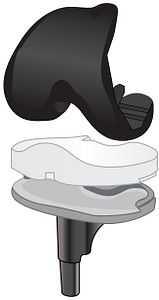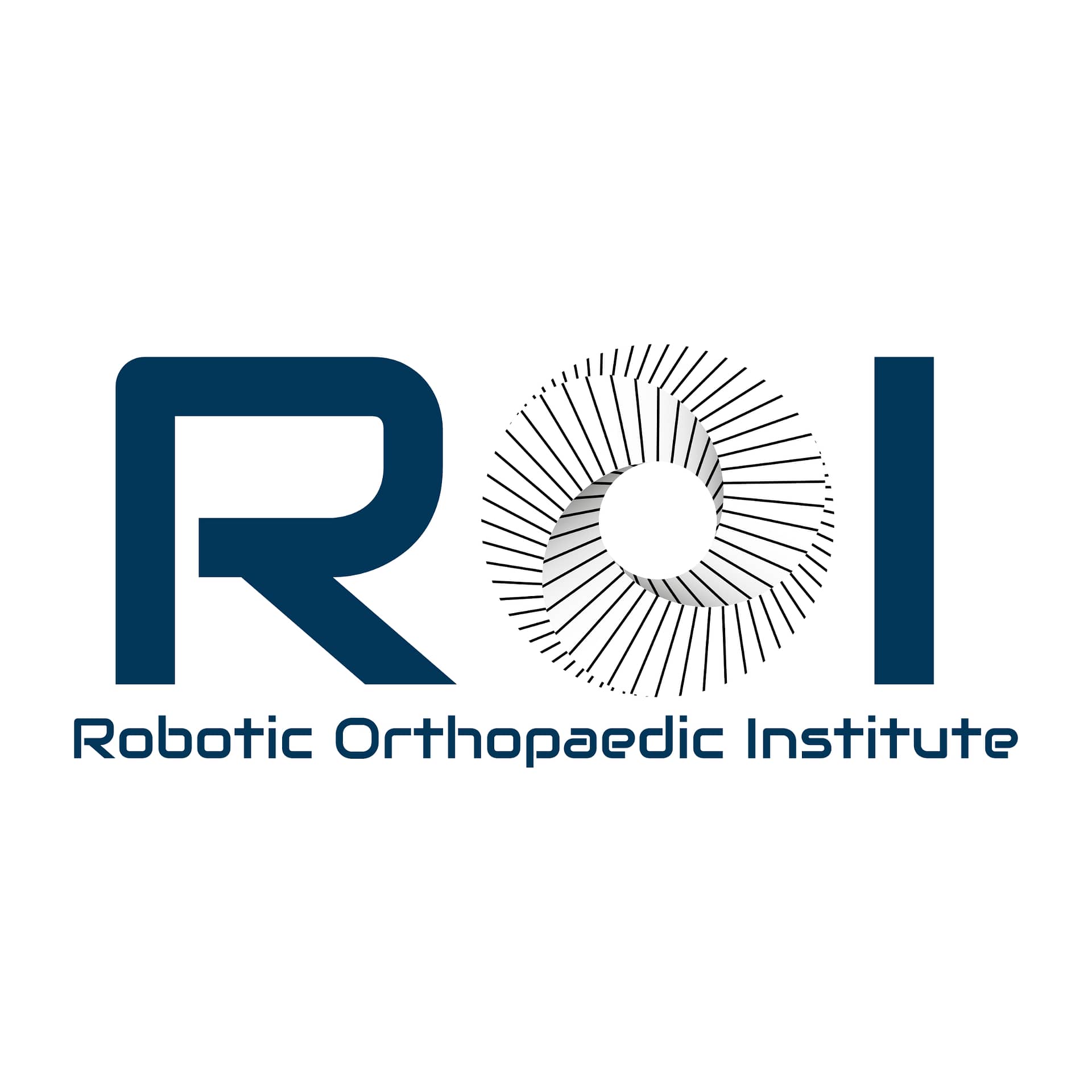In Southern Utah, robotic surgery has delivered better results compared to traditional and computer-assisted knee replacements.
The main advantage of robotic knee replacement over non-robotic or computer assisted navigation is quicker recovery. Robotic knee replacement surgery is less invasive than conventional knee replacement. Robotic assisted knee replacement requires smaller incisions and less disturbance to surrounding bone and tissue. Patients experience less postoperative pain and heal faster as a result. They tend to return to their normal activities much sooner.
Studies indicate surgeries performed with robotics offer more accurate and precise results. The reason for this precision and accuracy is that there’s less trauma on the bone and tissue through this minimally-invasive approach to total and partial knee replacement surgery with better implants, quicker healing, and shorter rehabilitation.
Since robotic knee replacement surgery is minimally invasive, most patients with robotic assisted total knee replacement return to their home the same day. Skipping the hospital stay tends to reduce the risk of hospital-acquired infections.
There are two types of recovery associated with any knee replacement surgery: short term and long term recovery periods. During your short-term recovery, you’ll walk with minimal or no aid (e.g., a walker or cane) and use narcotic pain medications only for breakthrough pain medications. You’ll be using mostly over-the-counter pain relief. Short term recovery is about three months. During long-term recovery phase, you’ll be back to your normal life activities, hiking, biking, golf, pickleball, meal preparation, etc. You’ll be considered “recovered” when your current status has improved far beyond your osteoarthritic pre-operative pain level and dysfunction.
That’s an excellent question! The robot is a capital expense for the surgery center or the hospital. This means it is treated no differently than any other instruments (retractors, forceps, scalpels, drills, saws, etc.) used in surgery. The implants can vary in cost, and often must match the manufacturer of the robot. In the USA, the price of the implants and other hardware used in surgery have a maximum allowed markup (usually around 7%) by Medicare and most insurers. Implants can be used without a robotic-assisted device as well. One just doesn’t get the same precision and accuracy in installation, positioning, and balancing.
For patients who must pay for their robotic knee replacement out of pocket, the price is just under $16,000 at the St George Surgical Center. That price includes the initial consultation with Dr Hicken, the facility fee, the use of the robot, the surgeon’s fee, the anesthetist’s fee for spinal anesthesia and an adductor block and the Exparel®, the 30-year VERILAST Oxinium® implant, the PICO-7 negative wound pressure dressing, your take home medications, an overnight stay if medically necessary, and the first post-operative visit at two weeks — in-person or via telehealth with Dr. Hicken.
In our office, we share space with Dr Ben Toolson, a physical therapist that is available to manage your post-operative rehabilitation. He offers physical therapy for hip replacement patients on a flat fee for the usual three-month course of physical therapy
If you are shopping for a knee replacement surgery package, compare these prices and all the included value and the precision and accuracy using the robotic technology, and the fact that you won’t need a pre-operative CT scan with other advertised knee replacement packages on the internet, point-by-point. If you need to travel to St George, it would be our pleasure to assist you with all your travel arrangements.

Dr Hicken does many “do-overs” for patients who had non-robotic knee replacement surgery by other surgeons untrained in the use of robotic technologies or that work in facilities where there is no robotic technology available. The first sign that it is time to consider a “revision” of your previous knee replacement is that your pain level and dysfunction have not improved much from your pre-operative status. Older implants also fail after 10-15 years and may need to be replaced. The need for a revision can be attributed to continued pain and poor function, incorrect placement and balancing, and lower quality implant survivorship that results from component malalignment or soft tissue imbalance.
The first indication is that you notice something’s just “not right”. The next step is to visit with us in person or via telehealth and obtain an order for imaging studies to check your knee implant and the surrounding bone.
After your images are reviewed, you’ll visit with Dr. Hicken in person or via telehealth and together, you’ll decide your action plan to get you on the road to recovery. If you have insurance or Medicare, the revision surgery and imaging are usually covered as a plan benefit.
Dr. Hicken performs many revisions on patients who reside in St George, Cedar City, Northwestern Arizona, and Southern Nevada because they live close enough to drive. But he has also treated patients who reside all throughout the USA and Canada. You can fly directly into St George from Phoenix, Arizona (AA), Salt Lake City, Utah (DL), Denver, Colorado (UA), and Dallas, Texas (AA). Many people also fly into Las Vegas and drive up to St George for surgery.
We’ve learned that any insurance that covers minimally invasive surgery generally covers Robotic Surgery. This is true for widely held insurance plans like Medicare, where in most cases, pre-authorization may not even be required. It is important to note that your insurance or employer- or union-sponsored coverage will depend on your plan and benefits package.
In Southern Utah, the only plans that do not cover Robotic Knee Replacement Surgery with Dr Hicken are plans contracted with only one local hospital that does not have a robot available for use by the surgeons on staff at that hospital. Patients with those insurance plans may elect to travel to another facility where Dr Hicken maintains privileges in Nevada, Idaho and elsewhere in Utah that have robotic technologies available. Your travel costs can be minimized with assistance from Angel Flights West, if necessary. We’ll handle all the medical travel arrangements for you.
